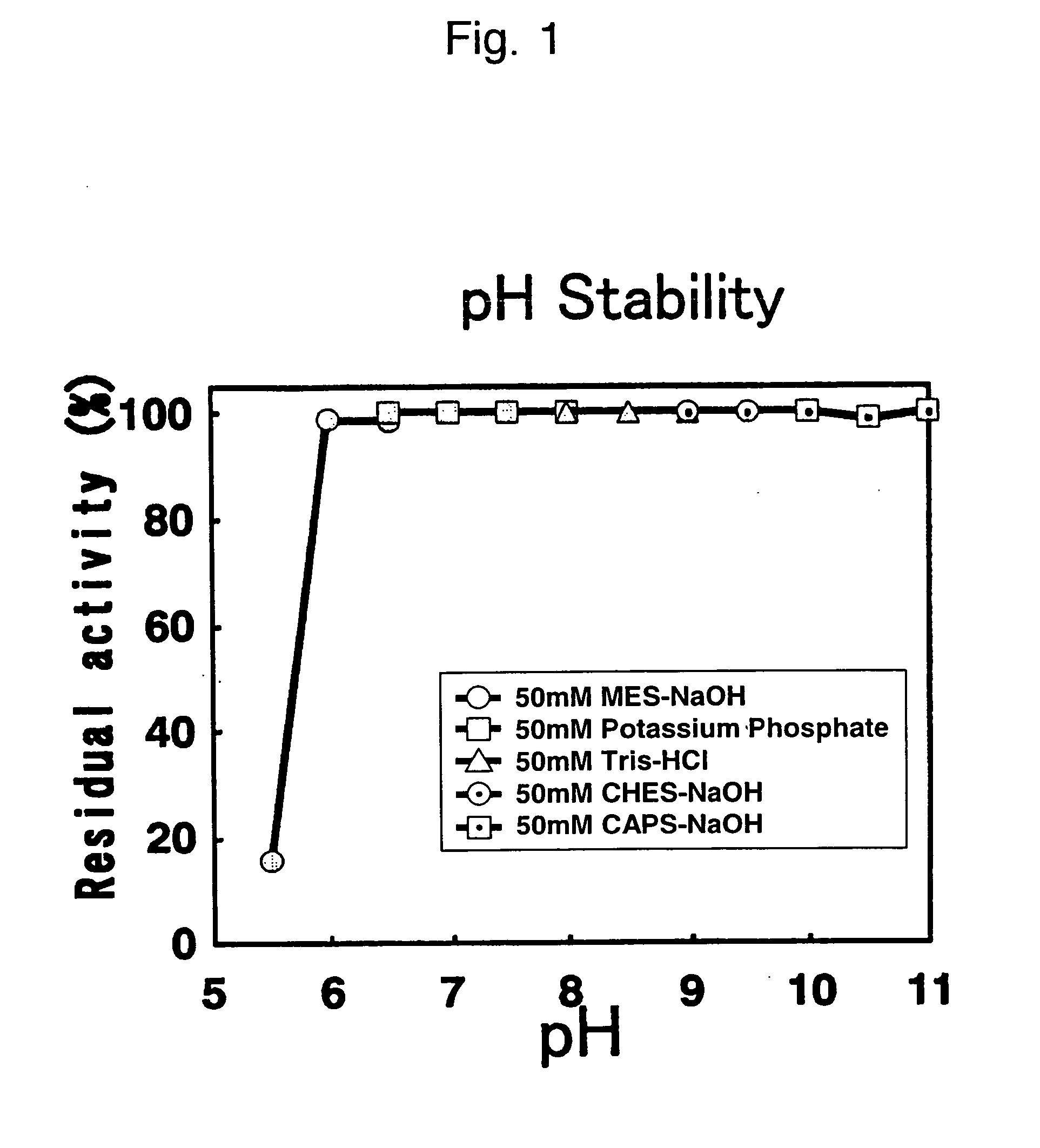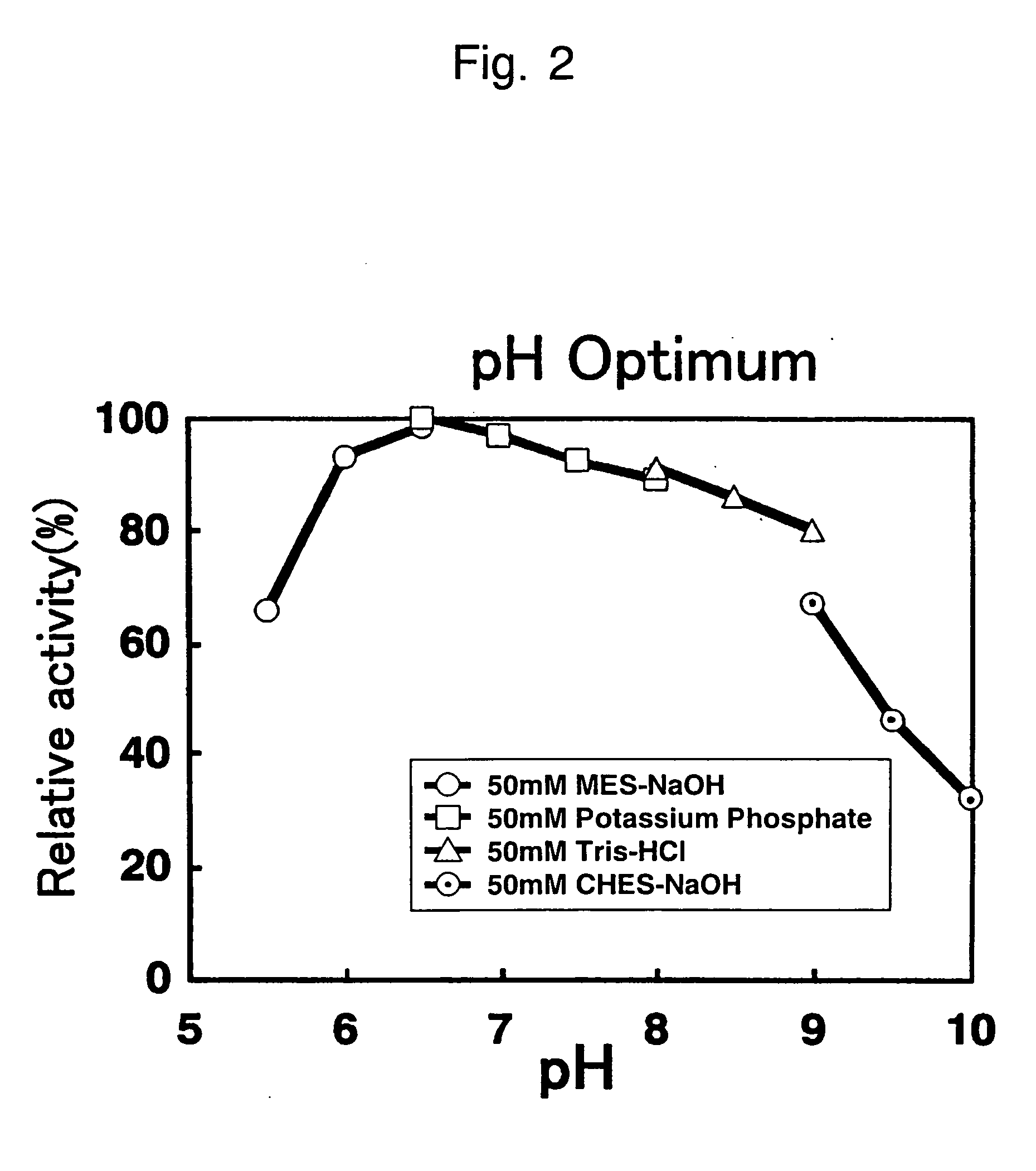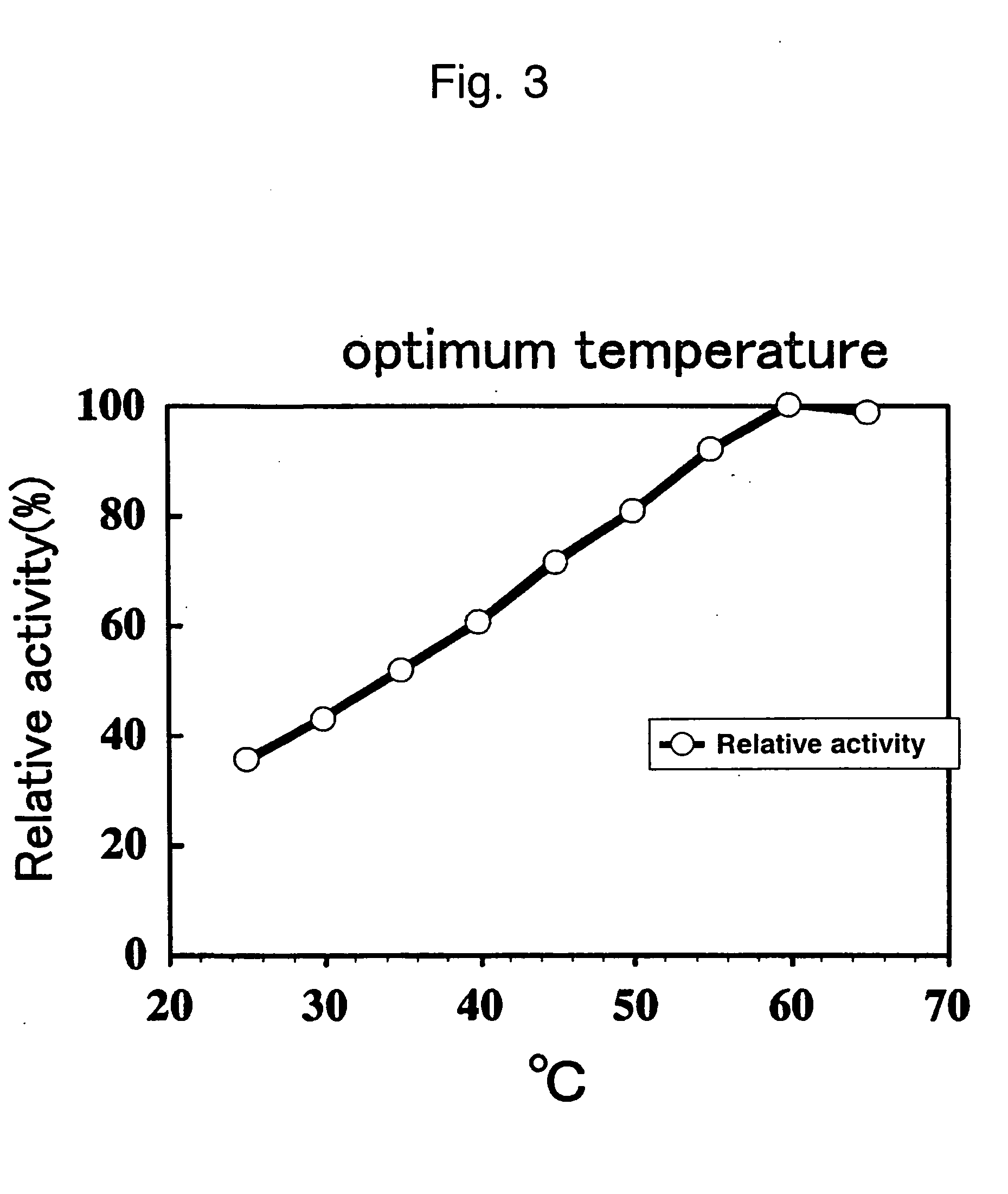Modified sarcosine oxidases, genes and recombinant DNAs thereof, and methods for preparing the same
a technology of sarcosine oxidase and sarcosine oxidase, which is applied in the field of modified sarcosine oxidase, genes and recombinant dnas thereof, and methods for preparing the same, can solve the problems of decreased stability, difficult measurement, and inability to meet the requirements of modified enzymes, so as to improve stability and improve activity.
- Summary
- Abstract
- Description
- Claims
- Application Information
AI Technical Summary
Benefits of technology
Problems solved by technology
Method used
Image
Examples
example 1
[0078]E. coli JM109 (pSOM1) containing recombinant plasmid DNA (pSOM1) (FERM BP-3604) was cultivated in LB medium (DIFCO). After collecting the bacterial cells, recombinant plasmid pSOM1 were extracted and purified from these cells using QIAGEN (QIAGEN). Approximately 100 μg of plasmid were obtained.
[0079] Using the plasmid obtained, error-prone PCR was performed with N-terminal and C-terminal primers (SEQ ID NOs: 3 and 4). In particular, Ex-taq (TAKARA SHUZO) was used with these primers under 0.075 mM manganese concentration, to carry out PCR amplification of pSOM1.
[0080] After the completion of the reaction, amplified fragments of sarcosine oxidase genes with various mutations introduced were treated with restriction enzymes Bam HI and Spe I, followed by being ligated into the vector fragment (the longer fragment) of Bam HI- and Spe I-digests of unmutated pSOM1 using T4 ligase (Boehringer).
[0081] After the ligation was complete, the reaction solution was transformed with compet...
example 2
[0090]E. coli JM109(pSOM3) comprising the modified sarcosine oxidase genes obtained as above was cultivated with shaking in 100 ml of TY medium (1% bacto-tryptone, 0.5% bacto-yeast extract, 0.5% NaCl, pH 7.5) containing 50 μg / ml ampicillin for 16 hours, after which 10 ml was inoculated to 1 L of TY medium prepared similarly (except for containing 1 mM IPTG). After inoculation, it was cultivated at 120 r.p.m., 37° C. for approximately 20 hours.
[0091] Step 1 (Crude Enzyme Solution)
[0092] After the completion of cultivation, bacterial cells were collected by centrifugating 1 L of culture, and the cells were suspended in 50 ml of a solution of 20 mM Tris-HCl, 50 mM EDTA, pH 8.0. The cell suspension thus obtained was homogenized by sonication to obtain crude enzyme solution.
[0093] Step 2 (Ammonium Sulfate Precipitation)
[0094] Ammonium sulfate precipitation was performed by adding 20% ammonium sulfate to 50 ml of the crude enzyme solution obtained as above. Following ammonium sulfate ...
example 3
[0099] pH Stability
[0100] After treating the present enzyme for 5 hours each at 25° C. in each of the following buffers, the residual activities were measured. The results were as shown in FIG. 1. From FIG. 1, it can be seen that the stable pH range was between pH 6.0 and 11.0.
[0101] 50 mM MES-NaOH (pH 5.5, 6.0, 6.5)
[0102] 50 mM calcium phosphate buffer (pH 6.5, 7.0, 7.5, 8.0)
[0103] 50 mM Tris-HCl buffer (pH 8.0, 8.5, 9.0)
[0104] 50 mM CHES-NaOH buffer (pH 9.0, 9.5, 10.0)
[0105] 50 mM CAPS-NaOH (pH 10.0, 10.5, 11.0)
[0106] Optimal pH
[0107] When the enzyme reactions were carried out in the presence of 100 mM sarcosine, 0.2 mM Toos, 0.16 mM 4-aminoantipyrine and 10 U / ml peroxidase in each of the following buffers, the results were as shown in FIG. 2. From FIG. 2, it can be seen that the optimal pH was around 6.5.
[0108] 50 mM MES-NaOH (pH 5.5, 6.0, 6.5)
[0109] 50 mM potassium phosphate buffer (pH 6.5, 7.0, 7.5, 8.0)
[0110] 50 mM Tris-HCl buffer (pH 8.0, 8.5, 9.0)
[0111] 50 mM CHE...
PUM
| Property | Measurement | Unit |
|---|---|---|
| pH | aaaaa | aaaaa |
| pH | aaaaa | aaaaa |
| pH | aaaaa | aaaaa |
Abstract
Description
Claims
Application Information
 Login to View More
Login to View More - R&D
- Intellectual Property
- Life Sciences
- Materials
- Tech Scout
- Unparalleled Data Quality
- Higher Quality Content
- 60% Fewer Hallucinations
Browse by: Latest US Patents, China's latest patents, Technical Efficacy Thesaurus, Application Domain, Technology Topic, Popular Technical Reports.
© 2025 PatSnap. All rights reserved.Legal|Privacy policy|Modern Slavery Act Transparency Statement|Sitemap|About US| Contact US: help@patsnap.com



